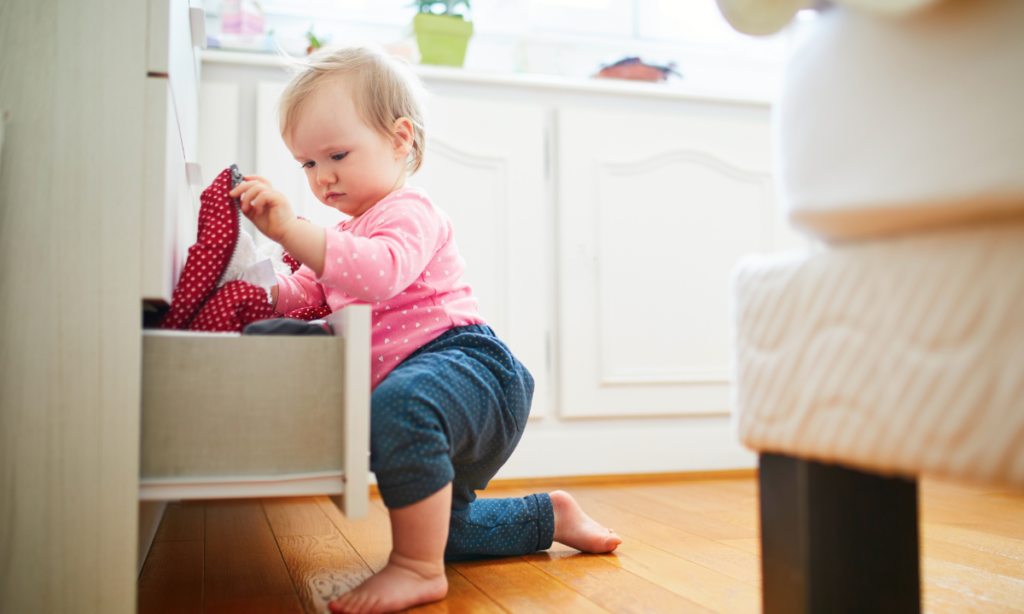Learn 5 professional organizing strategies for kids’ wardrobes and closets. Discover how to design a practical, pleasurable environment that fosters self-reliance, accountability, and vital life skills.
Table of Contents
Introduction
Due to a mismanaged wardrobe, it can be stressful for parents to find a pair of coats they used a week ago. Children’s wardrobe organization can be done more effectively and affordably without becoming a mess or taking up too much space in the house. They have neat closets and dressers, which aid in children’s development of critical abilities such as responsibility, prioritization, and classification. This article will review five useful organizing strategies for kids’ wardrobes and closets, helping you create a pleasant and useful environment that encourages good behaviors. See tips for stress-free children’s toy storage and care.
Organizing Children’s Dressers and Closets
1. Inbuilt Shelving

Your child’s wardrobe can be made to be both practical and well-organized with built-in storage solutions. Think of adding cubbies, drawers, or shelves suited to their requirements. Adjustable storage solutions are great for developing youngsters since you can change the arrangement as they do. To keep things organized and accessible, use dividers to organize clothing, shoes, and accessories. You may maximize the closet’s potential by making the most of the vertical space with storage cabinets or stackable shelves.
2. Color Correspondence

Color coordination, or grouping items by category, like dresses, tops, and bottoms, can make organizing your child’s wardrobe simple and efficient. To make identification simple, use color-coded hangers, baskets, or containers—sort related items together, such as dresses in pink or all-blue shirts. Please encourage your child to store clothes in their proper place so that the color-coded system is maintained. This approach facilitates dressing and teaches your child how to categorize things.
3. Wallpapers

Adding wallpaper can create a playful and interesting environment in your child’s wardrobe. Select designs for kids that stimulate their curiosity and creativity. For hassle-free upkeep, think about choosing wallpaper that is long-lasting and simple to clean. For added usefulness, choose blackboard or magnetic wallpaper, allowing your child to express themselves and keep track of crucial notes. Your child will be more inclined to take pride in their space if their wardrobe is attractive.
4. Use a Clothes Rack

A well-organized closet must have a clothes rack. Hooks offer extra space for storing bags, caps, and accessories, while double or triple-rod racks make the most of available space. If you want your child to have flexibility in moving the clothing rack around the room, consider getting a portable one. To encourage good habits and lessen clutter, teach your child to put up their clothes as soon as they are finished using them.
5. Ensure Easy Accessibility

Easy access to your child’s wardrobe and closet promotes self-sufficiency and independence. For ease of use, arrange items worn regularly at eye level or close to the front. Install pull-out drawers or shelves for regions that are difficult to reach, and use storage containers or baskets with easily accessible lids. Urge your youngster to keep up with their dresser and closet regularly so they can learn lifelong organizing skills.
Conclusion
With the help of these five doable suggestions, kids’ closets will be neat and functional while imparting important life lessons like independence, responsibility, and classification. A neat closet also saves time, lowers stress levels, and promotes creativity. Remember to involve your kids in the organizing process to foster lifelong lessons. Start organizing today and witness your child thrive in their newly created space!
Purchase children’s toys here or children’s toys at Amazon.









